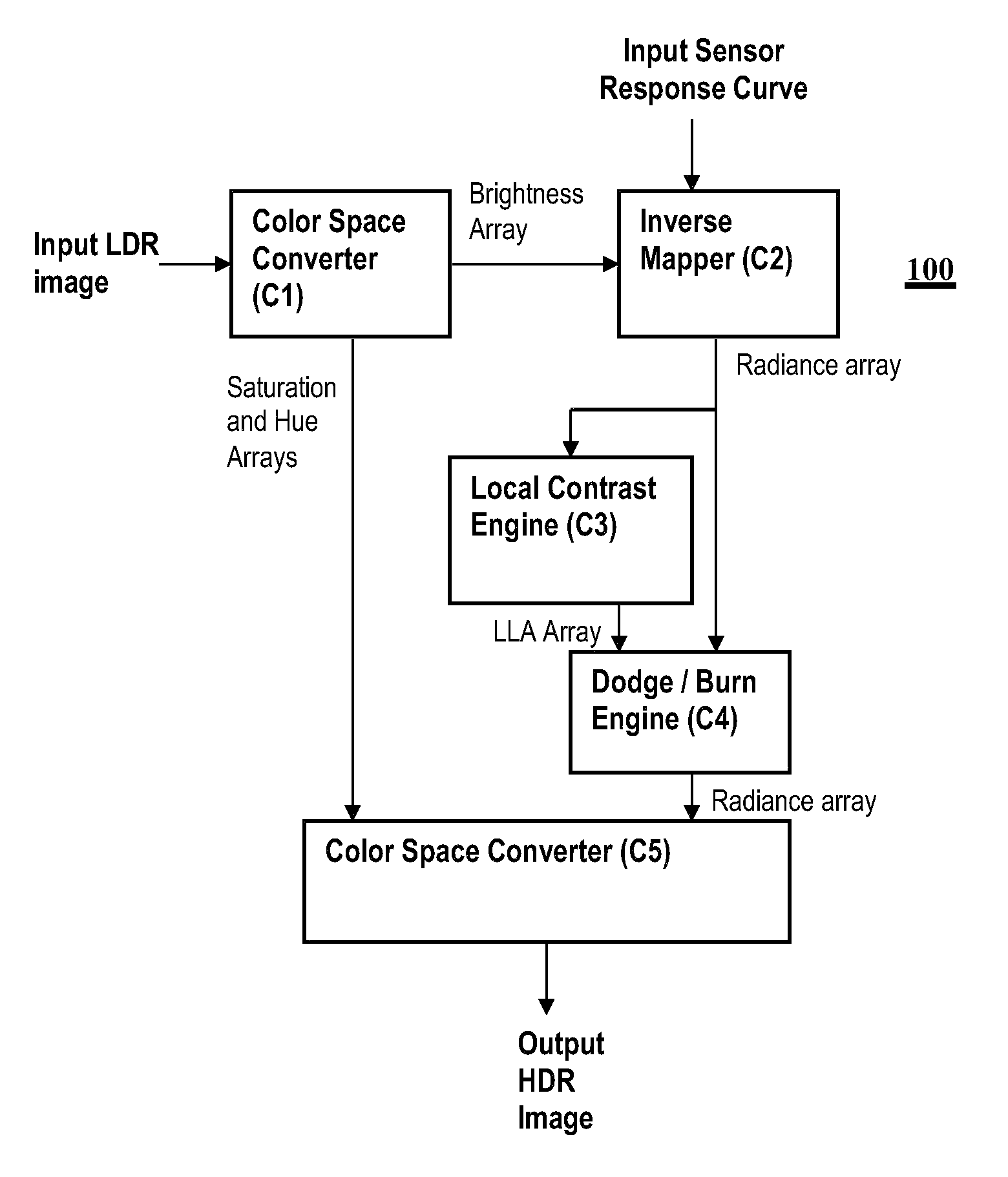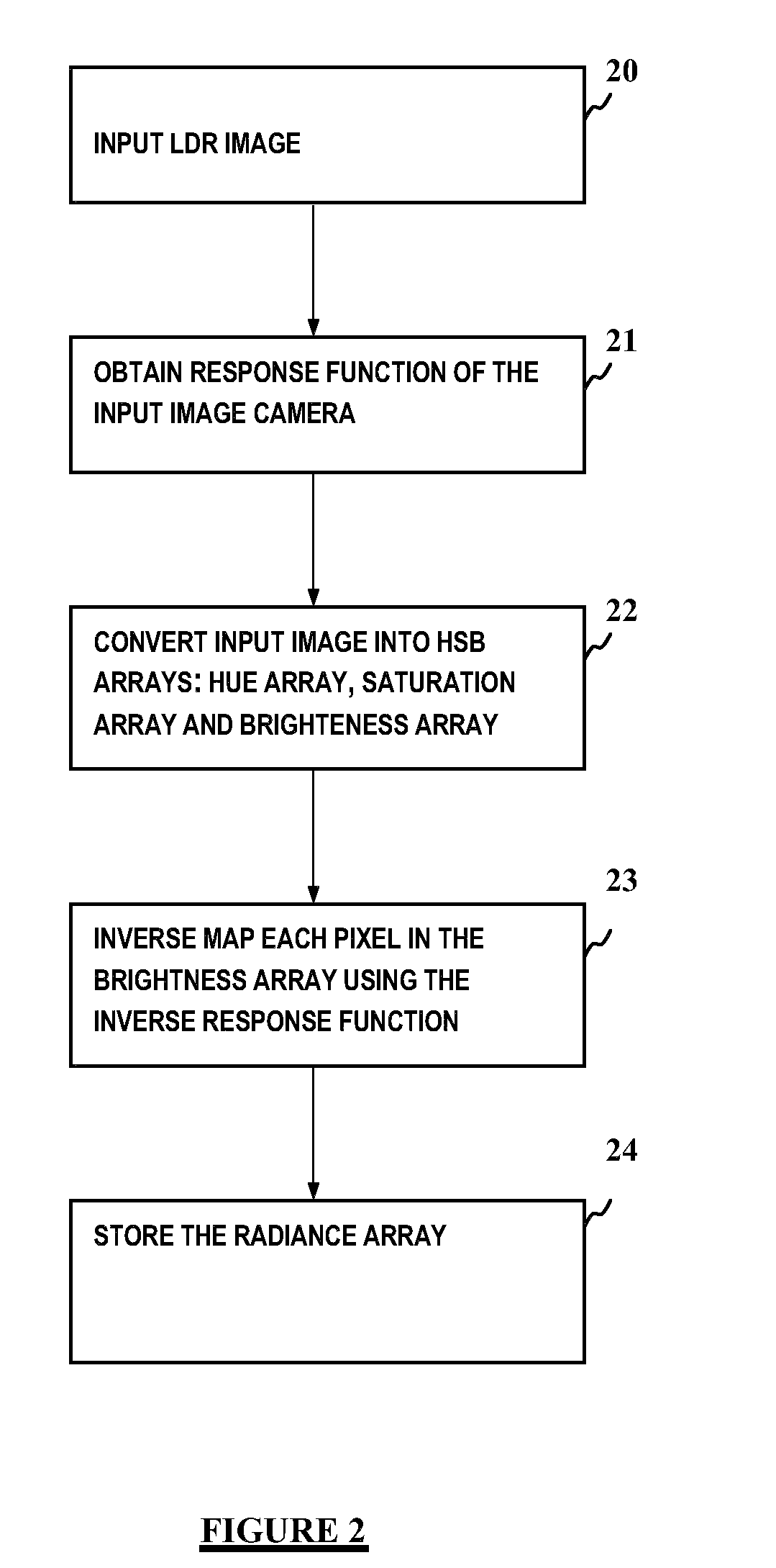Transforming a digital image from a low dynamic range (LDR) image to a high dynamic range (HDR) image
a digital image and high dynamic range technology, applied in image enhancement, color signal processing circuits, instruments, etc., can solve the problems of loss of details, limited use of hdri displays, and introduction of noise in the region of high luminan
- Summary
- Abstract
- Description
- Claims
- Application Information
AI Technical Summary
Benefits of technology
Problems solved by technology
Method used
Image
Examples
Embodiment Construction
[0022]In general, an improved reverse tone mapping for transforming an LDR image into an HDR image is provided. The camera response curve is used to reconstruct the radiance map of the image, instead of performing inverse gamma or standard fixed inverse function as provided in the prior art solutions.
[0023]Certain aspects rely upon dodging and burning operations to selectively increase the luminance or decrease the luminance of an image, respectively. A dodging and burning like operation is applied in the HDR domain to extend the dynamic range of an image. This also generally expands the local contrast allowing for more visible details that are not visible in the LDR image. Moreover, applying a dodging and burning like operation in the HDR domain allows for performing smoothing, thereby decreasing the quantization effects.
[0024]Advantages include but are not limited to the following: (i) a simplified technique to perform recovering of HDR values from a single LDR image, which is eas...
PUM
 Login to View More
Login to View More Abstract
Description
Claims
Application Information
 Login to View More
Login to View More - R&D
- Intellectual Property
- Life Sciences
- Materials
- Tech Scout
- Unparalleled Data Quality
- Higher Quality Content
- 60% Fewer Hallucinations
Browse by: Latest US Patents, China's latest patents, Technical Efficacy Thesaurus, Application Domain, Technology Topic, Popular Technical Reports.
© 2025 PatSnap. All rights reserved.Legal|Privacy policy|Modern Slavery Act Transparency Statement|Sitemap|About US| Contact US: help@patsnap.com



